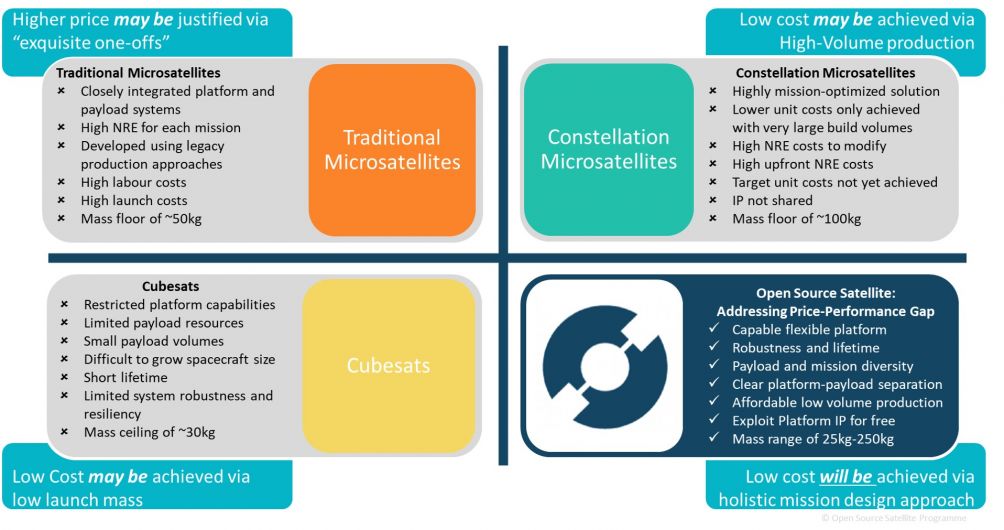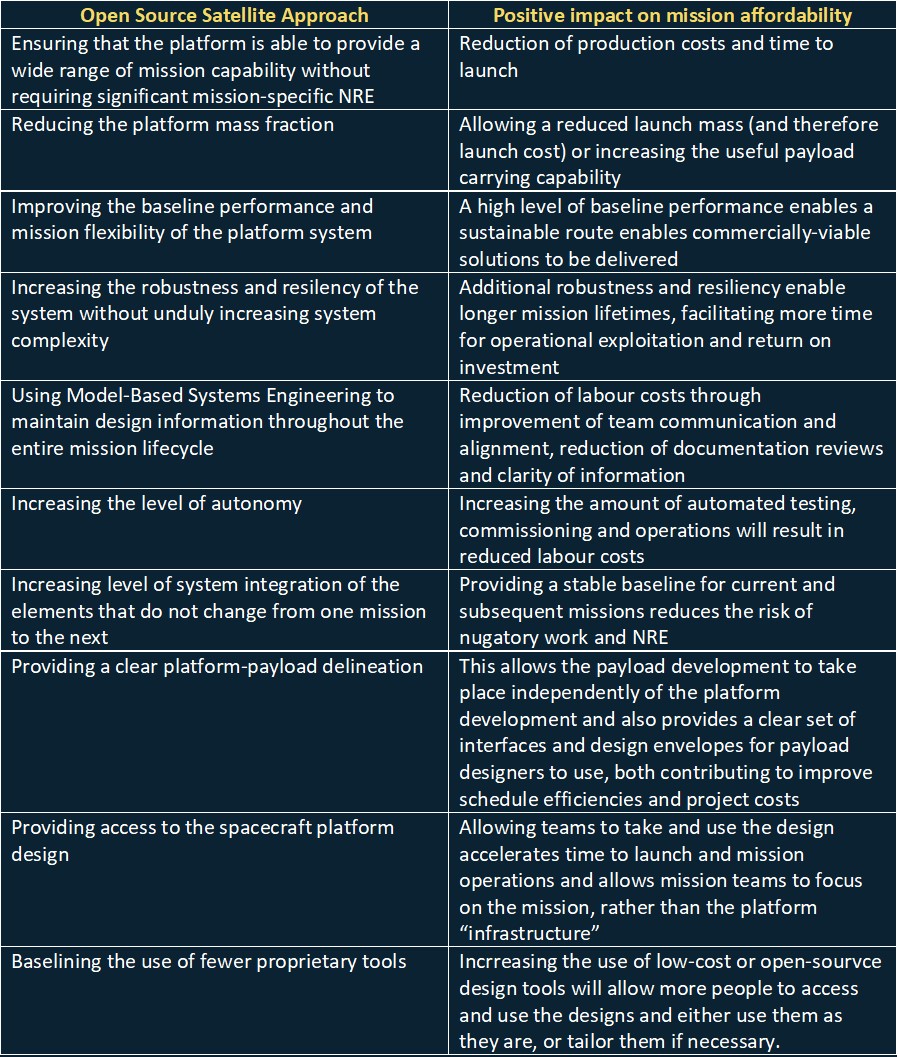Filling a gap in the small satellite market
We are building a team of people who thrive on solving new problems and who did not join the satellite industry to reinvent the wheel. We want to create cost-effective, efficient solutions and approaches to implementing technologies, systems and programmes that will allow our customers to achieve their visions.
We find and develop “best of breed” mission-enabling solutions for our customers
If cost-effective capabilities already exist that enable us to meet customer needs, we seek to leverage them, allowing us the freedom to solve other new and emerging challenges. If we cannot find solutions at the right price-performance point, which enable our customers business cases to close, we will look to develop solutions, critical mission-enabling technologies or systems, either ourselves or in collaboration with like-minded individuals and teams.
As a team we are driven by the desire to stimulate the utilisation and exploitation of space, while promoting its responsible and sustainable use. We are constantly seeking out new technologies, processes and tools, challenging the norms and exploring different approaches, all with the aim of making space more accessible.
These philosophies were the catalyst for the Open Source Satellite Programme; we identified a gap in the small satellite product landscape that needed to be filled in order to enable the next step in mission affordability and accessibility, and wanted to adopt a different approach for its design, development and exploitation.
The gap in the small satellite capability landscape
There are strong indications from our stakeholders that there is a need for a microsatellite platform that can deliver the robustness, flexibility, scalability and performance characteristics that can enable a range of missions and applications – and which, most importantly, can be manufactured affordably in small quantities.
In the last thirty years, organisations have made significant advances in reducing the price point of microsatellite platforms, through approaches such as the use of commercial off the shelf components, tools and processes. More recently the cubesat community have significantly reduced the financial barrier to entry for those looking to develop satellite-based systems. While both have had a significant impact on the accessibility of space, there is still much to be done, and it is apparent that the need exists for a platform that has the capabilities, performance, robustness of a microsatellite, but at a comparable price of a cubesat.
We evaluated the capabilities, characteristics and limitations of existing and emerging small satellites systems against these criteria and concluded that there are no satellite systems in the 25kg-250kg mass class available today that can address these combined requirements, as illustrated in the following figure:

The Open Source Satellite Programme: Promoting end-to-end mission affordability
All of these considerations can be distilled into a business case need for end-to-end mission affordability in low manufacturing quantities. There are several factors that influence affordability that we will be implementing in the Open Source Satellite platform design and programmatics:

We will continue to share our insights and information about our approach to achieving mission affordability in future articles.
Which factors do you think have the greatest impact on mission affordability?
Share your thoughts with the community in the Comments section below.
www.opensourcesatellite.org exists to create an environment that supports and enables entrepreneurial and innovative thinking, with the aim of taking the next step in small satellite capabilities.
Join our community, follow us and be part of the journey!
COMMENT
Thank you for your comment